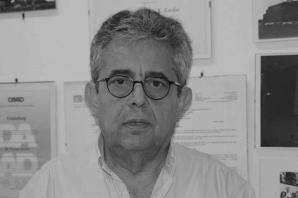Targeting cancer: nanocontainers deliver localised chemotherapy
Cancer is the second most common cause of death in the EU – and this figure is expected to rise due to an ageing population in Europe. In his ERC-funded ‘Nanotherapy’ project, Professor George Kordas has developed ‘nanocontainers’ – tiny hollow spheres with a width measured in molecules – which are attracted to cancer cells and, once there, deliver their payload of chemotherapy drugs. It is a kind of ‘guided missile’, aimed at the heart of a cancer cell.

“Our project, ‘Nanotherapy’, aims to use nanoparticles or ‘nanocontainers’ as carriers for drug delivery to target diseases, such as cancers,” explains Prof. Kordas. “We have demonstrated their success and are now in the process of moving towards clinical trials.
“What we are talking about is extremely local chemotherapy,” he continues. The containers could be loaded with drugs and injected into the patient. The team has designed coatings for the nanocontainers that are sensitive to a cancer environment and external alternating magnetic fields (such as radio-frequency radiation). These ‘targeting molecules’, which are added on the carriers’ surface, are attracted to cancer cell molecules: making it possible to target specific cancers. This has been demonstrated in two types of cancer – breast and prostate cancer.
Guided missiles
“Our main achievement is the proof of targeting,” the professor says. “There’s nothing like this combination in the literature. Our containers have specificities to the cancers and the way they accumulate in cancer cells is unique.”
The project team has developed a chemical process for fabricating hollow containers from polymers. “We make a core, add a coating crafted with the targeting molecules, then remove the core,” explains Prof. Kordas. “The surface is therefore coated with molecules that have positive and negative sites that are both attracted to, and trapped by, the molecules on the outside of cancer cells.”
The nanocontainers are also sensitive to the cancer cells’ internal environment and are destroyed on entry – delivering the payload of drugs inside. They can be used to deliver traditional chemotherapy drugs, but may also enable a new generation of more effective drugs that are even more toxic to cancers. Because they will be delivered safely to the cells where they are needed, any side effects for the patient should be significantly reduced.
“Through targeting they become much more concentrated around cancer cells. So the non-toxic nanocontainers can deliver toxic drugs directly to the cancer,” he continues. “Our results so far indicate a 20-30 % reduction in cancer cells in just two weeks. The nanocontainers become internalised in the cells and are destroyed – becoming non-toxic – while releasing their loaded drug, destroying the cancer cells’ DNA.”
“Chemotherapy doses are limited by a patient’s tolerance to the drugs’ toxicity – usually related to their weight and height – but localised delivery means higher concentrations are possible,” he explains. “Combination therapy can reduce total toxicity by 70 %, but our nanocontainers can reduce toxicity to the patient to close to zero.”
Business plan and patents
“Most of our work during this five-year project has been on the chemistry to produce these targeting molecules,” he explains. “At first, we used computer simulation to design new molecules and then went on to explore their properties: what sites are active? What can be bonded together? What difference does attaching them to the surface of the nanocontainer make to the molecules?”
“My background is in a different field – physics and materials science – where I had been designing nanocontainers for 10 years,” he recalls. “But that was for industrial applications – such as self-healing of cars and building materials – so I’m thankful to the ERC panels, evaluators and reviewers for being open-minded enough to fund this medical research based on the quality of my previous work. Thanks to the ERC grant, we were able to recruit 15 very high-standard researchers to the team – mostly working in polymer chemistry and pharmacology. The ERC "Proof of Concept" grant is now funding a business plan and the filing of patents on the technology.
“During the summer of 2014, we plan to find companies to test the technology,” the professor says. “The nanocontainers can deliver any drug – for different diseases and types of cancers – so we want to work with several companies. We may be around three years away from clinical trials, however.
“I have lost friends to cancer and I hope this technology will help people,” he says. “I will be very happy if it can contribute to reducing suffering.”


